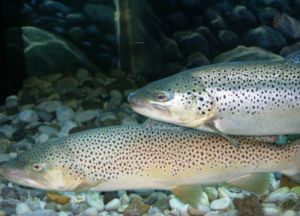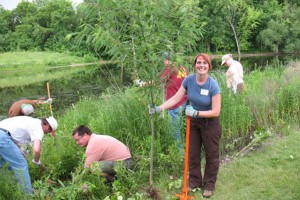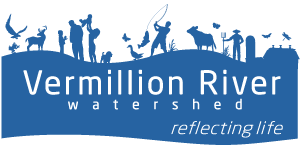- Categories
-
Tags
"State of the River" Report 2018 budget 25 by 25 Ag Water Quality Certification agriculture ais Alimagnet Angry Inch Angry Inch Brewery Apple Valley Apple Valley Senior Center aquatic invasive species astronomy bird watching board meeting buckthorn removal Burnsville Carpenter Nature Center Carpenter St. Croix Valley Nature Center citizen advisory group Clean Water Summit 2016 cleanup climate Coca-Cola Refreshments in Eagan Minn. Community Advisory Committee community event Conservation Minnesota County Fair CP Adams Park Dakota County Dakota County Parks Dakota County SWCD de-icing workshop Eagan Earth Day exhibits Farmington field day fishing Fix-It Clinic FMR Fortin Consulting Freshwater Society Friends of CNC Friends of the Mississippi River Governor Dayton Greenway groundwater Hastings Hastings Environmental Protectors Hastings Sand Coulee SNA information meeting invasive species removal Inver Grove Heights irrigation Joint Powers Board Kevin Smith Lake Marion Lakeville landscape for the river landscaping for clean water lawn and garden lawns maintenance MAISRC Master Water Stewards Mike Lynch Minnesota Department of Natural Resources Minnesota Institute of Astrophysics Minnesota Landscape Arboretum minnesota pollution control agency Minnesota StarWatch Mississippi River MPCA MWS native plants nitrates North Creek Parks Pine Bend SNA planting for clean planting for clean water pollinators prairie seed collection private wells projects public hearing public meeting rain barrel rainbarrel raingarden redevelopment rosemount salt sand coulee SNA Schaar's Bluff Gathering Center scientific and natural area Scott County scott swcd shoreline Smart Salting snow and ice best practices South Branch Vermillion River Spring Lake Park St. Croix Valley Bird Club star map starry stonewort starry trek stormwater retrofits SWCD TAG Technical Advisory Group Technical Advisory Group (TAG) tour town hall township officers Trevor Russell trout stream Trout Unlimited TU turfgrass maintenance Twin Cities Trout Unlimited UMN Extension University of Minnesota urban urban best management practices Vermillion Falls Park Vermillion River Vermillion River Aquatic Management Area Vermillion River Watershed Vermillion River Watershed Joint Powers Organization Vermillion Riverkeepers Vermillion Stewards volunteer VRWJPB VRWJPO VRWPC water conservation water quality Water treatment watershed management Watershed Plan watershed planning commission Watershed Planning Commission (WPC) We Are Water MN Whitetail Woods Regional Park winter road maintenance WPC
Irrigation Water Testing – Vermillion (city)
Dakota County, the Dakota County Soil and Water Conservation District, and the Minnesota Agricultural Water Resource Center will be offering farmers who irrigate their crops the opportunity to test their irrigation water for nitrogen. Testing is at no cost.
Participants will receive their results the same day. They will learn how to credit nitrate in their irrigation water for next year’s nutrient management plans. Participants will also walk through the Irrigation Management Assistant (IMA) Tool with a SWCD staff member. The tool helps with irrigation scheduling.
Private well owners can also have their drinking water tested for nitrate. They will receive their results and treatment recommendations, if applicable.
Sampling instructions for irrigators
Samples may be taken the day of analysis or ahead of time. Samples taken ahead of time must be frozen until attending a session to prevent samples from degrading.
Participants may bring in several frozen samples collected over a period of several days to get a more representative result.
Samples can be collected directly from irrigators or by installing a boiler drain to a pivot point or the well itself.
If sampling directly from irrigators:
- Allow irrigators to pump water for at least 15 minutes before sampling.
- Fill a clean 5-gallon bucket, or similar container. Mix before collecting the sample.
- Collect the test sample in a small Ziploc bag or a clean bottle or container. Only about 1 ounce of water is needed for testing.
Sampling instructions for private well owners
- Collect samples from your primary drinking water source after eight hours of nonuse, preferably first thing in the morning
- Collect your sample in a small Ziplock bag or clean bottle or container
- Do not run the water before sampling — collect the first draw in the container
- Only about 1 ounce of water is needed for testing, but collecting extra is advised.
Test results
Nitrogen results are confidential. Participants are not required to take any action after testing. They will receive their results and information on nitrogen crediting.
Irrigation Water Testing – Farmington
Dakota County, the Dakota County Soil and Water Conservation District and the Minnesota Agricultural Water Resource Center will be offering farmers who irrigate their crops the opportunity to test their irrigation water for nitrogen. Testing is at no cost.
Participants will receive their results the same day. They will learn how to credit nitrate in their irrigation water for next year’s nutrient management plans. Participants will also walk through the Irrigation Management Assistant (IMA) Tool with a SWCD staff member. The tool helps with irrigation scheduling.
Private well owners can also have their drinking water tested for nitrate. They will receive their results and treatment recommendations, if applicable.
Sampling instructions for irrigators
Samples may be taken the day of analysis or ahead of time. Samples taken ahead of time must be frozen until attending a session to prevent samples from degrading.
Participants may bring in several frozen samples collected over a period of several days to get a more representative result.
Samples can be collected directly from irrigators or by installing a boiler drain to a pivot point or the well itself.
If sampling directly from irrigators:
- Allow irrigators to pump water for at least 15 minutes before sampling.
- Fill a clean 5-gallon bucket, or similar container. Mix before collecting the sample.
- Collect the test sample in a small Ziploc bag or a clean bottle or container. Only about 1 ounce of water is needed for testing.
Sampling instructions for private well owners
- Collect samples from your primary drinking water source after eight hours of nonuse, preferably first thing in the morning
- Collect your sample in a small Ziplock bag or clean bottle or container
- Do not run the water before sampling — collect the first draw in the container
- Only about 1 ounce of water is needed for testing, but collecting extra is advised.
Test results
Nitrogen results are confidential. Participants are not required to take any action after testing. They will receive their results and information on nitrogen crediting.
Irrigation Water Testing – Marshan Township
Dakota County, the Dakota County Soil and Water Conservation District and the Minnesota Agricultural Water Resource Center will be offering farmers who irrigate their crops the opportunity to test their irrigation water for nitrogen. Testing is at no cost.
Participants will receive their results the same day. They will learn how to credit nitrate in their irrigation water for next year’s nutrient management plans. Participants will also walk through the Irrigation Management Assistant (IMA) Tool with a SWCD staff member. The tool helps with irrigation scheduling.
Private well owners can also have their drinking water tested for nitrate. They will receive their results and treatment recommendations, if applicable.
Sampling instructions for irrigators
Samples may be taken the day of analysis or ahead of time. Samples taken ahead of time must be frozen until attending a session to prevent samples from degrading.
Participants may bring in several frozen samples collected over a period of several days to get a more representative result.
Samples can be collected directly from irrigators or by installing a boiler drain to a pivot point or the well itself.
If sampling directly from irrigators:
- Allow irrigators to pump water for at least 15 minutes before sampling.
- Fill a clean 5-gallon bucket, or similar container. Mix before collecting the sample.
- Collect the test sample in a small Ziploc bag or a clean bottle or container. Only about 1 ounce of water is needed for testing.
Sampling instructions for private well owners
- Collect samples from your primary drinking water source after eight hours of nonuse, preferably first thing in the morning
- Collect your sample in a small Ziplock bag or clean bottle or container
- Do not run the water before sampling — collect the first draw in the container
- Only about 1 ounce of water is needed for testing, but collecting extra is advised.
Test results
Nitrogen results are confidential. Participants are not required to take any action after testing. They will receive their results and information on nitrogen crediting.
TCTU Event: Habitat Project on South Branch Vermillion River, Day 1
Twin Cities Trout Unlimited needs 14 volunteers to help improve stream habitat for trout.
What Will We Be Doing
This will be Day 1 of a unique 2 Day effort. You can also, if so desired, sign up for Day 2 (a separate sign-up for Saturday, Aug. 24).
Under the direction of Mark Nemeth of the Minnesota Department of Natural Resources, we will be harvesting & hauling cedar trees to a trailer, then delivering to the South Branch Vermillion Aquatic Management Area. The trees will be used to protect the banks of several areas on the river. We will also be doing some reseeding where we cut the trees.
The Plan
Meet at the start time at the parking lot of the AMA. We will carpool to the Vermillion Highlands area to cut trees, re-seed, and haul the trees back to the AMA.
What You Should Bring
- Long pants
- Long sleeve shirt
- Sunblock
- Heavy work gloves
- Water
What TCTU & the DNR Will Provide
- All equipment
- Bug spray
- LUNCH after we’re all done working
Registration will end 24 hours before the event for an accurate headcount.
TCTU Event: Habitat Project on South Branch Vermillion River, Day 2
Twin Cities Trout Unlimited needs 20 volunteers to help improve stream habitat for trout.
Under direction from Mark Nemeth of the Minnesota Department of Natural Resources, we will be installing cedar trees (cut during the event the day before) in sections of the river to protect the stream banks from erosion.
The Plan
- Meet at the start time at the parking lot of the South Branch Vermillion River Aquatic Management Area.
- We will haul and install cedars at several locations in the river.
What You Should Bring
- Chest waders (in water work) or be prepared to wet wade
- Long sleeve shirt
- Sunblock
- Heavy work gloves
- Water
What the DNR & TCTU Will Provide
- All equipment
- Bug spray
- LUNCH after we’re all done working
Registration will close 24 hours before the event for an accurate list of participants.
Irrigation Water Testing – Hampton (city)
Dakota County, the Dakota County Soil and Water Conservation District and the Minnesota Agricultural Water Resource Center will be offering farmers who irrigate their crops the opportunity to test their irrigation water for nitrogen. Testing is at no cost.
Participants will receive their results the same day. They will learn how to credit nitrate in their irrigation water for next year’s nutrient management plans. Participants will also walk through the Irrigation Management Assistant (IMA) Tool with a SWCD staff member. The tool helps with irrigation scheduling.
Private well owners can also have their drinking water tested for nitrate. They will receive their results and treatment recommendations, if applicable.
Sampling instructions for irrigators
Samples may be taken the day of analysis or ahead of time. Samples taken ahead of time must be frozen until attending a session to prevent samples from degrading.
Participants may bring in several frozen samples collected over a period of several days to get a more representative result.
Samples can be collected directly from irrigators or by installing a boiler drain to a pivot point or the well itself.
If sampling directly from irrigators:
- Allow irrigators to pump water for at least 15 minutes before sampling.
- Fill a clean 5-gallon bucket, or similar container. Mix before collecting the sample.
- Collect the test sample in a small Ziploc bag or a clean bottle or container. Only about 1 ounce of water is needed for testing.
Sampling instructions for private well owners
- Collect samples from your primary drinking water source after eight hours of nonuse, preferably first thing in the morning
- Collect your sample in a small Ziplock bag or clean bottle or container
- Do not run the water before sampling — collect the first draw in the container
- Only about 1 ounce of water is needed for testing, but collecting extra is advised.
Test results
Nitrogen results are confidential. Participants are not required to take any action after testing. They will receive their results and information on nitrogen crediting.

Meet-a-Stream Day with Minnesota Trout Unlimited
Join MNTU education specialist and long time fly angler, Evan Griggs, at his favorite MNTU habitat project sites. Tour the project site to see how habitat work benefits the stream. Learn about stream ecology by sampling macroinvertebrates to determine water quality and see what the trout are eating. Then we’ll practice our fly fishing skills, like casting and knot tying, before heading out to try and catch some trout.
Our programs are tailored for kids, families, and newer anglers. This is a great way to explore some new fishing spots, understand how our habitat projects benefit trout, and grow your fishing skills! All gear provided and no fishing license or trout stamp are required for participants at these events. For ages 10+, an adult must accompany their minor(s) at all times. If looking to register more than 3 people or have questions, contact Evan Griggs, tic.mntu@gmail.com.

Native Seed Collection at Vermillion River Linear Park – with Friends of the Mississippi River
Gathering the seeds of native plants in order to be able to restore other areas to more natural habitats is important work. It’s also a very enjoyable and educational activity. Come and learn more about the native plants in our area parks.
After a brief introduction and training, volunteers will collect native prairie seeds on the restored sandy-soil prairie. The FMR land conservation team will redistribute the seed to areas of nearby Vermillion Falls Park that have lower plant diversity. This seeding will help improve habitat for pollinators and grassland birds.
All are welcome, however capacity is limited, and registration is required. All supplies and training will be provided, and volunteers will work closely with FMR staff. This event is part of the Vermillion Stewards program, engaging Vermillion River Watershed residents to learn about the local watershed while working to protect and enhance its unique natural resources.
Space is limited, so sign up today!


